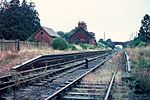Beacon Hill, Burghclere, Hampshire

There are two hills in Hampshire called Beacon Hill; the other one is near Warnford.Beacon Hill is near the village of Burghclere and Watership Down, in north Hampshire. The hill's name is derived from the fact that it was one of many Beacon Hills in England and beyond. This hill was once the site of the most famous beacon in Hampshire. It is 261 metres high and has one of England's most well known hill forts on its slopes, visible from the main A34 road which passes close by. From there, outstanding views of the surrounding area and much of Hampshire may be obtained. The site is open to the public and managed by Hampshire County Council. It is an 80.7-hectare (199-acre) biological Site of Special Scientific Interest called Burghclere Beacon and a Nature Conservation Review site, Grade I.
Excerpt from the Wikipedia article Beacon Hill, Burghclere, Hampshire (License: CC BY-SA 3.0, Authors, Images).Beacon Hill, Burghclere, Hampshire
Beacon Pass, Basingstoke and Deane Burghclere
Geographical coordinates (GPS) Address Nearby Places Show on map
Geographical coordinates (GPS)
| Latitude | Longitude |
|---|---|
| N 51.312777777778 ° | E -1.3436111111111 ° |
Address
Beacon Pass
RG20 9LR Basingstoke and Deane, Burghclere
England, United Kingdom
Open on Google Maps








